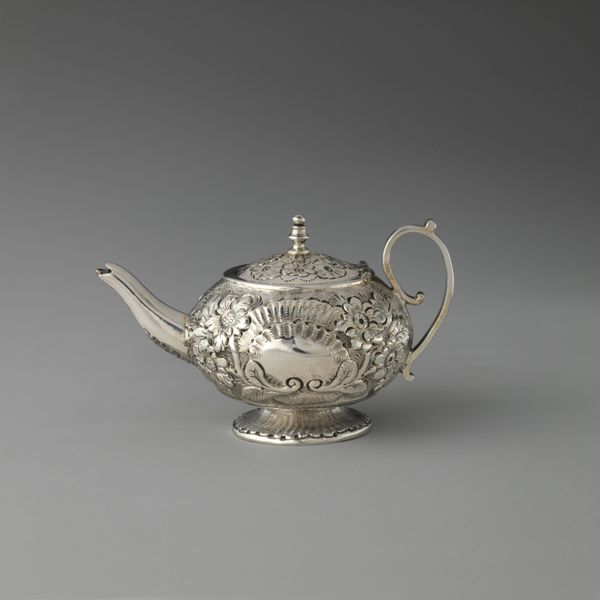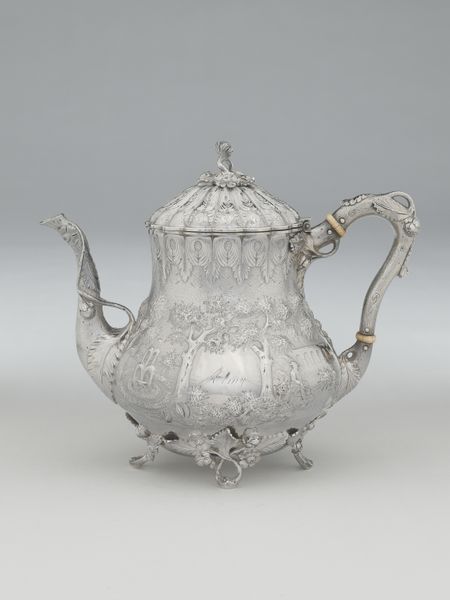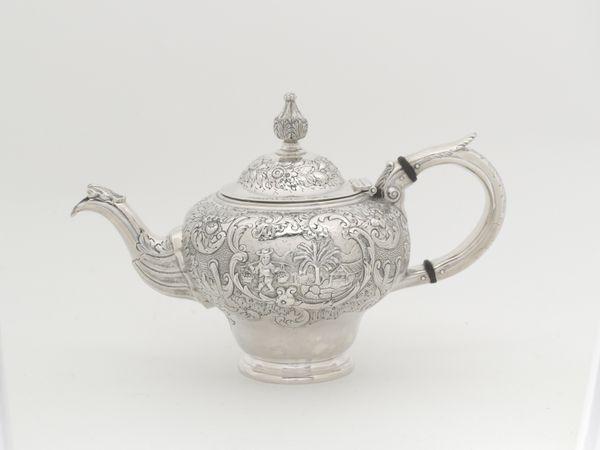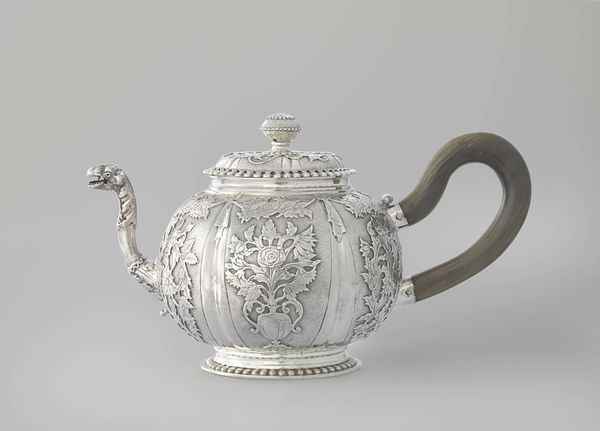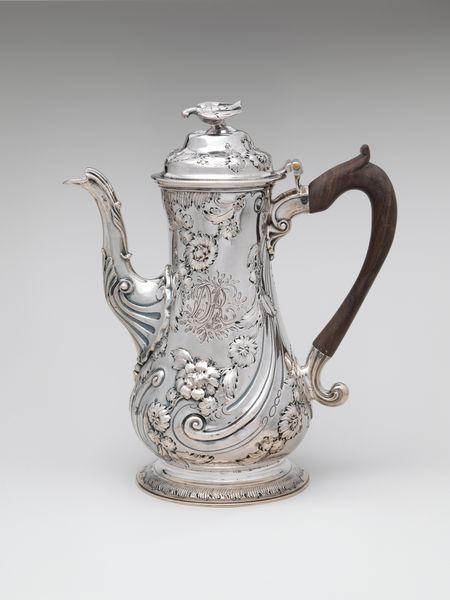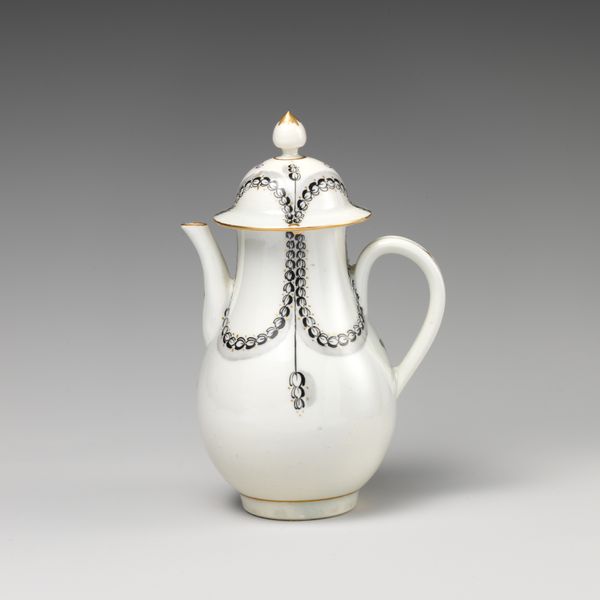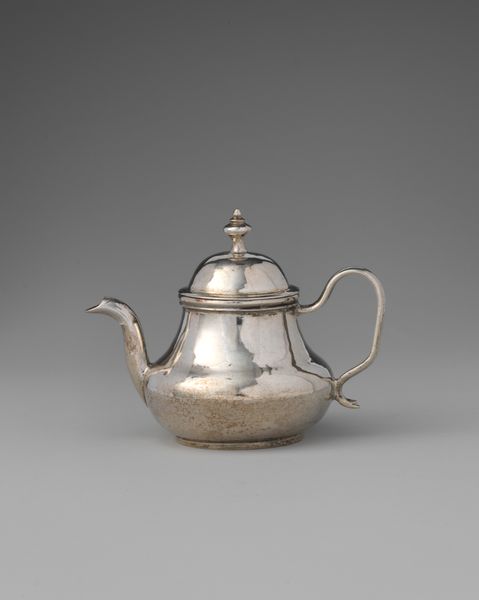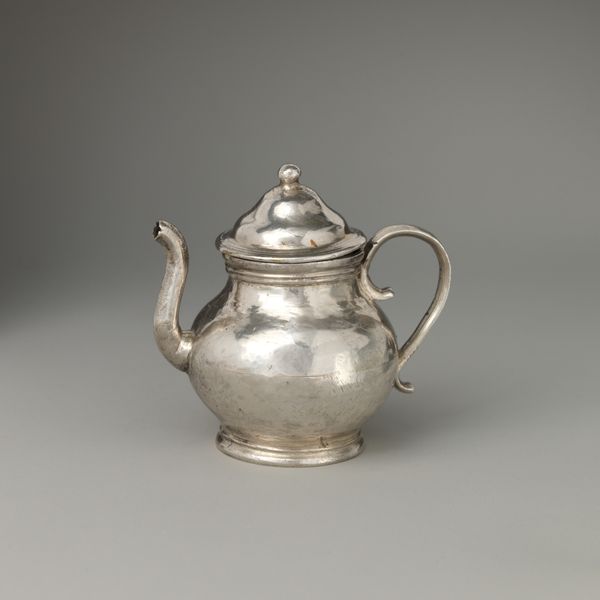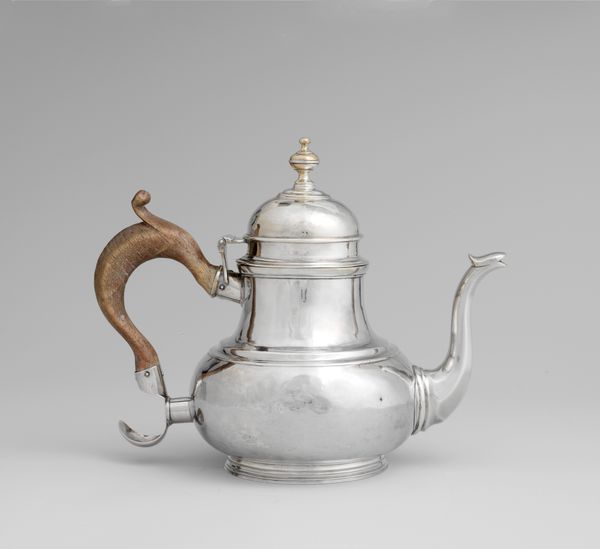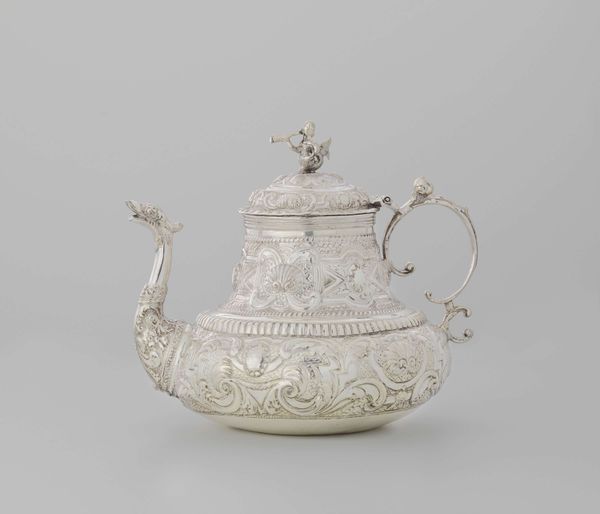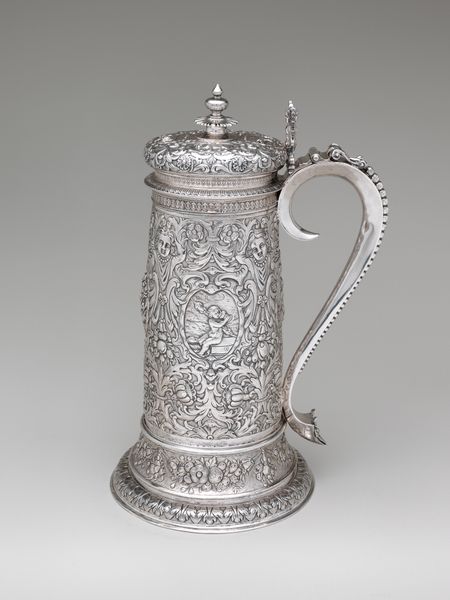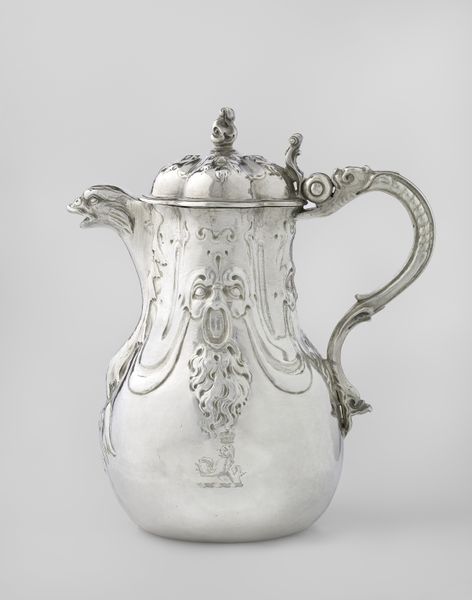
Dimensions: 2 9/16 × 2 in. (6.5 × 5.1 cm)
Copyright: Public Domain
Editor: This is a miniature coffeepot, part of a set, crafted from silver around 1827-1829. It resides at the Metropolitan Museum of Art. What strikes me is its incredible detail for such a small object. It seems almost overwhelmed with floral patterns. What do you see in this piece? Curator: I see a fascinating echo of cultural values embedded in this ornate object. The density of the floral decoration, characteristic of Baroque revival styles, speaks to a desire for abundance and status. Consider how flowers themselves functioned symbolically—often conveying specific messages of love, remembrance, or virtue. Editor: So, it’s not just decoration for decoration’s sake? Curator: Precisely! The choice of flora is deliberate. The silversmith, likely working for a wealthy patron, packed cultural meaning into every curve and leaf. The miniature scale enhances the exclusivity of the object. It's a status symbol made even more precious by its diminutive form. Think of it as condensed cultural capital. What does its functionality suggest to you? Editor: It's intriguing to think about actually using this tiny coffeepot. Perhaps it was more for show than practical use, meant to convey wealth and taste. Curator: Indeed. Objects like these become powerful conduits of shared cultural understandings and values, revealing how societies express their ideals through crafted forms. Do you see anything else, now knowing that symbols, materials and scale work together? Editor: I didn't appreciate all the layers packed into such a small vessel before. Thanks for revealing that for me. Curator: It was my pleasure. And that reminds me how objects continue to yield up their cultural weight, if we care to listen to their echoes from the past.
Comments
No comments
Be the first to comment and join the conversation on the ultimate creative platform.
